India's Top 5 Commodities to Trade in
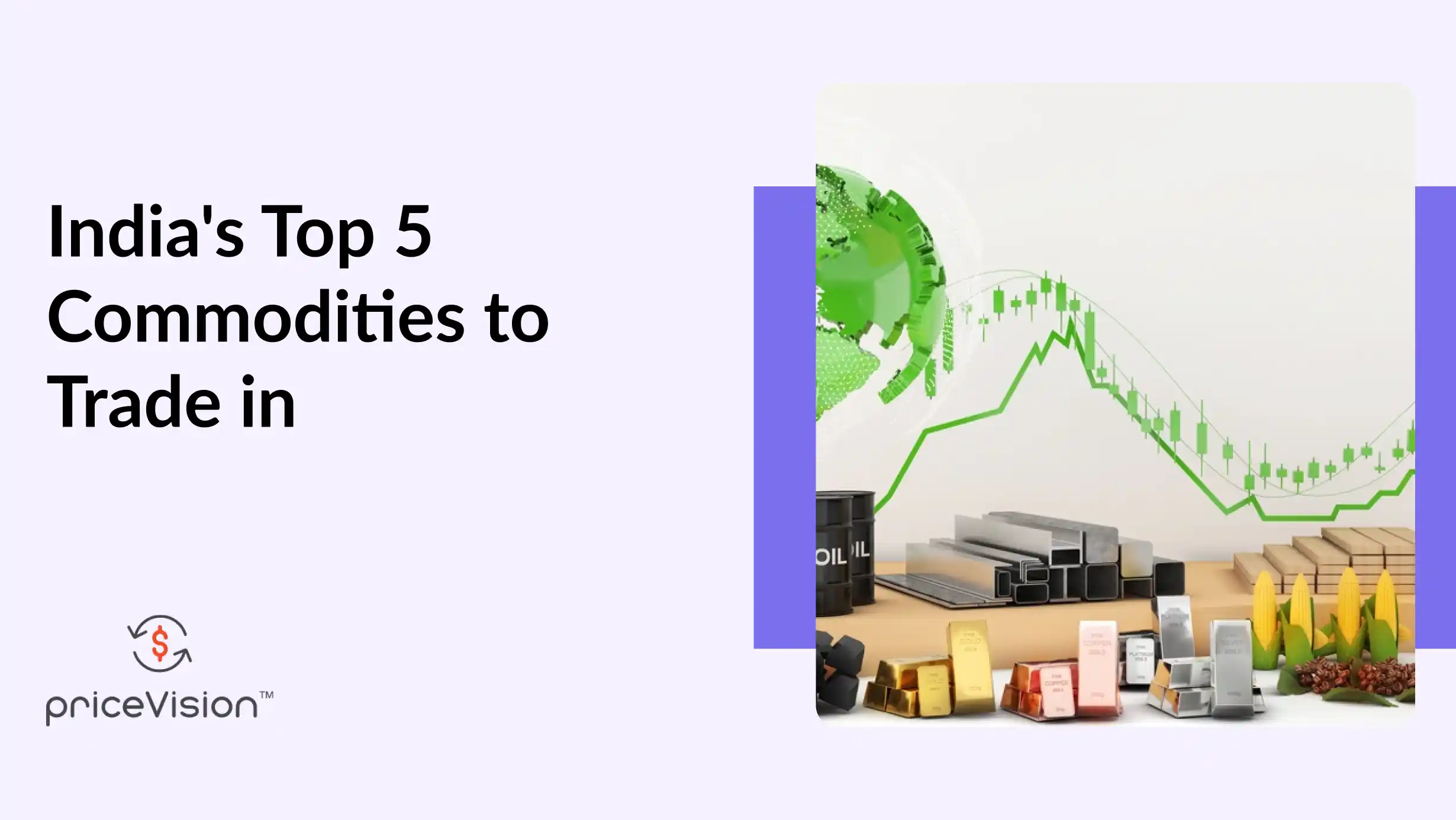
India’s commodity market plays a big role in the economy. It connects buyers and sellers of raw materials like gold, oil, and grains. This market helps businesses manage risks and plan better. Commodity trading boosts economic growth. It creates jobs, supports industries, and attracts investors. Many traders focus on specific commodities based on demand, trends, and profit potential. Commodity prices are key in trading decisions. Prices change due to supply, demand, and global events. To make smart choices, traders need accurate price predictions. PriceVision helps traders stay ahead with AI-driven price forecasts.
Through this blog, let us learn about India's top 5 commodities to trade in!
1. Gold: A Safe Haven for Traders
Gold is one of the most traded commodities in India. It has deep cultural importance. People buy gold for weddings, festivals, and investments. Its value remains strong even in tough times. That’s why traders see it as a safe-haven asset.
Why is Gold a Popular Commodity in India?
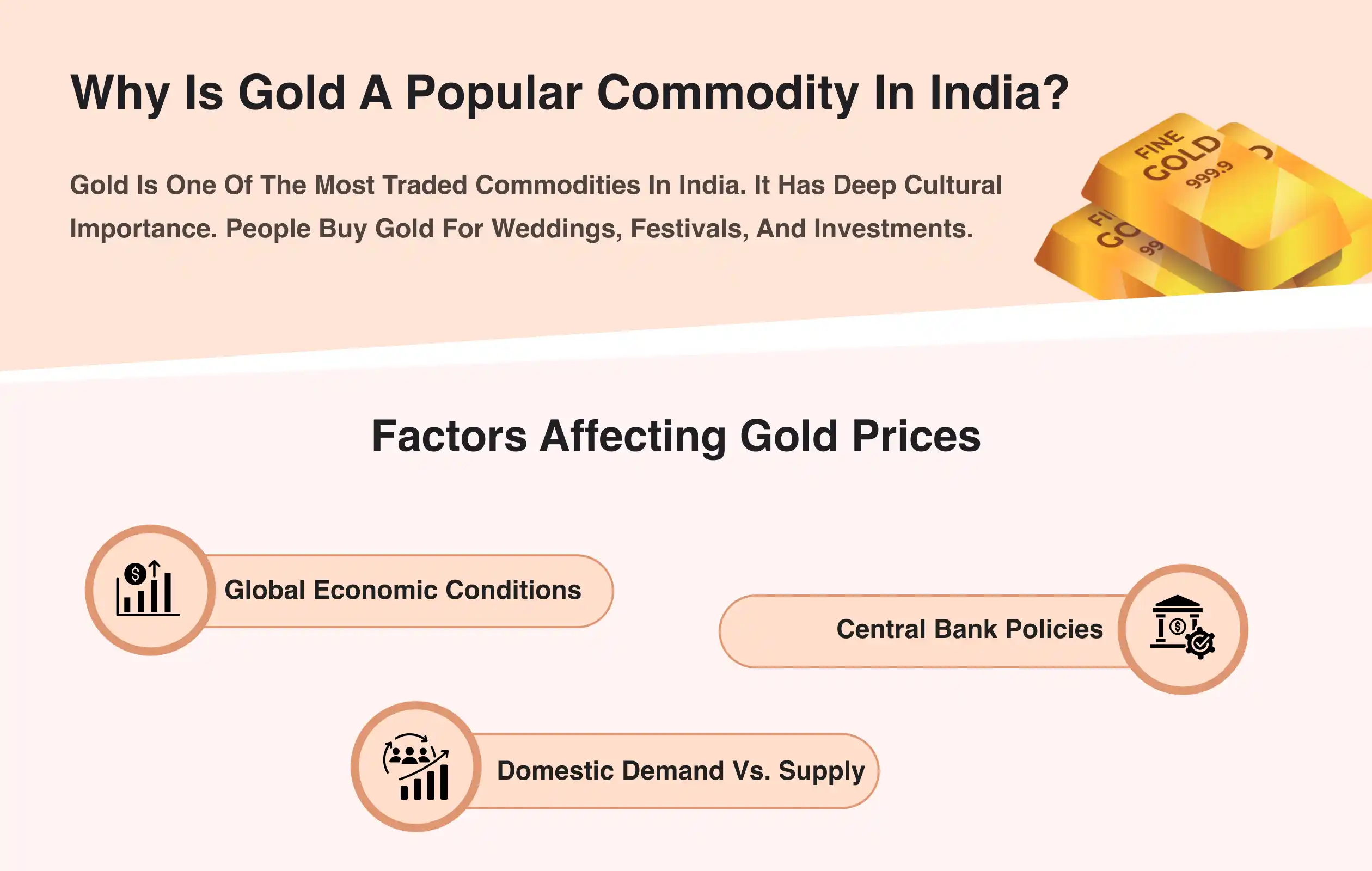
Gold is not just a metal; it’s wealth. Families pass it down through generations. The demand for gold jewelry is always high, keeping the market active.
Gold also protects against inflation. When the economy is unstable, gold prices rise. Investors trust gold when stock markets fall. This makes it a smart investment during uncertain times.
Factors Affecting Gold Prices
Gold prices change often. Several factors impact them:
● Global economic conditions – A weak economy pushes gold prices up.
● Central bank policies – Interest rates and money supply influence gold rates.
● Domestic demand vs. supply – High demand with low supply increases prices.
Trading Gold in the Commodity Market
Gold is traded on MCX (Multi Commodity Exchange). Traders buy and sell gold futures to profit from price changes.
Smart traders use AI tools like PriceVision to predict price trends. This helps them make better decisions and maximize profits.
2. Crude Oil: The Backbone of Industrial Growth
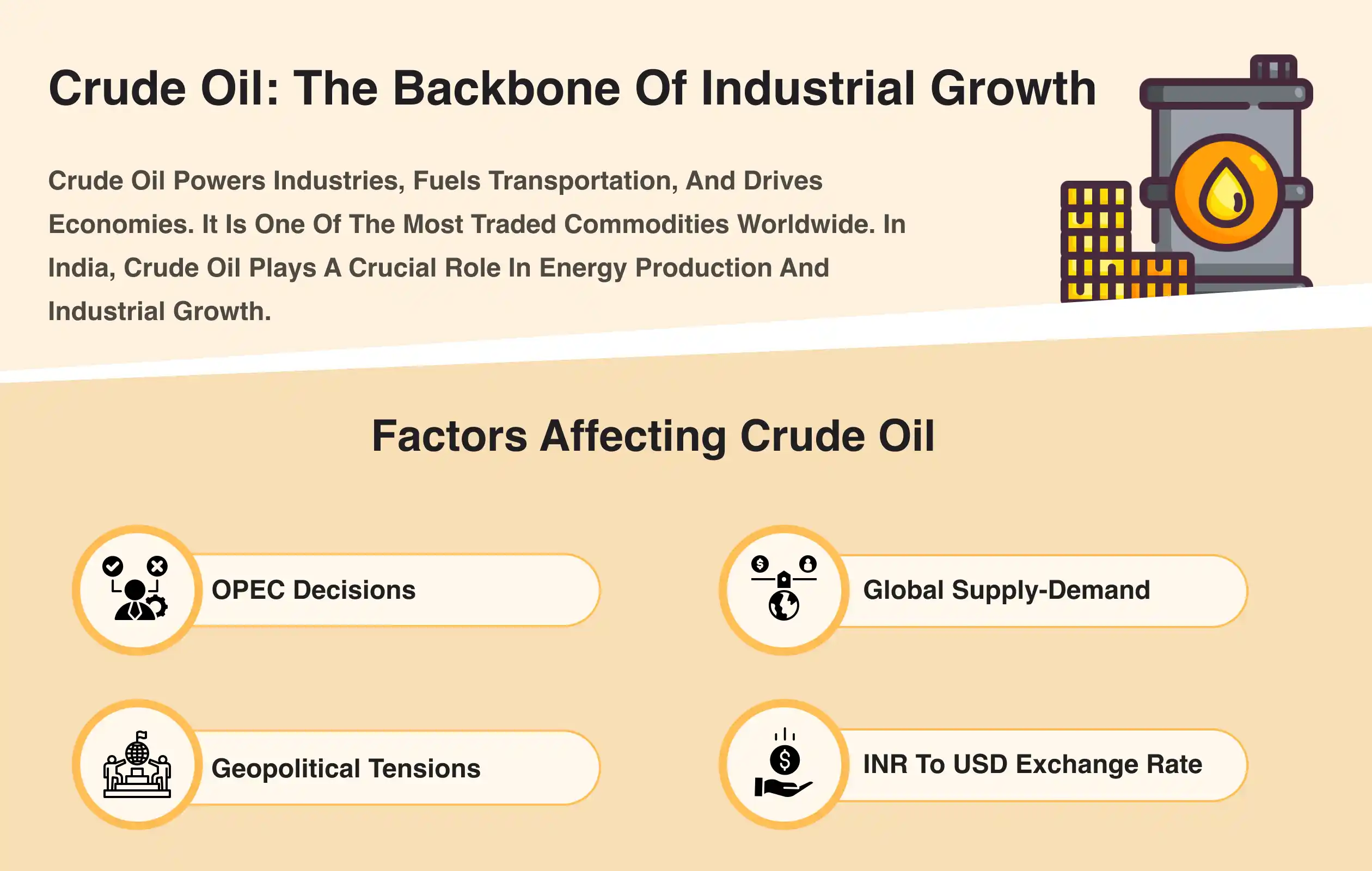
Crude oil powers industries, fuels transportation, and drives economies. It is one of the most traded commodities worldwide. In India, crude oil plays a crucial role in energy production and industrial growth. Since India imports most of its oil, crude oil prices directly impact businesses and consumers.
Why is Crude Oil Essential in Commodity Trading?
Crude oil affects multiple industries. From manufacturing to aviation, everything depends on it. Higher oil prices increase production costs, making goods more expensive. Lower prices benefit businesses and consumers.
India relies heavily on oil imports. Any change in global oil prices affects India’s economy. This makes crude oil an important commodity in the Indian commodity market.
Factors Affecting Crude Oil Prices
Several factors influence crude oil prices:
● OPEC decisions – Oil-producing nations control supply, impacting prices.
● Global supply-demand – More demand and less supply increase prices.
● Geopolitical tensions – Wars and conflicts create price fluctuations.
● INR to USD exchange rate – A weaker rupee makes oil imports costlier.
Trading Crude Oil in India
Crude oil futures are traded on MCX (Multi Commodity Exchange). Traders analyze price trends to make profits.
Smart traders use PriceVision to make AI-powered price predictions. It helps them make better trading decisions and stay ahead in the market.
3. Silver: The Dual-Purpose Asset
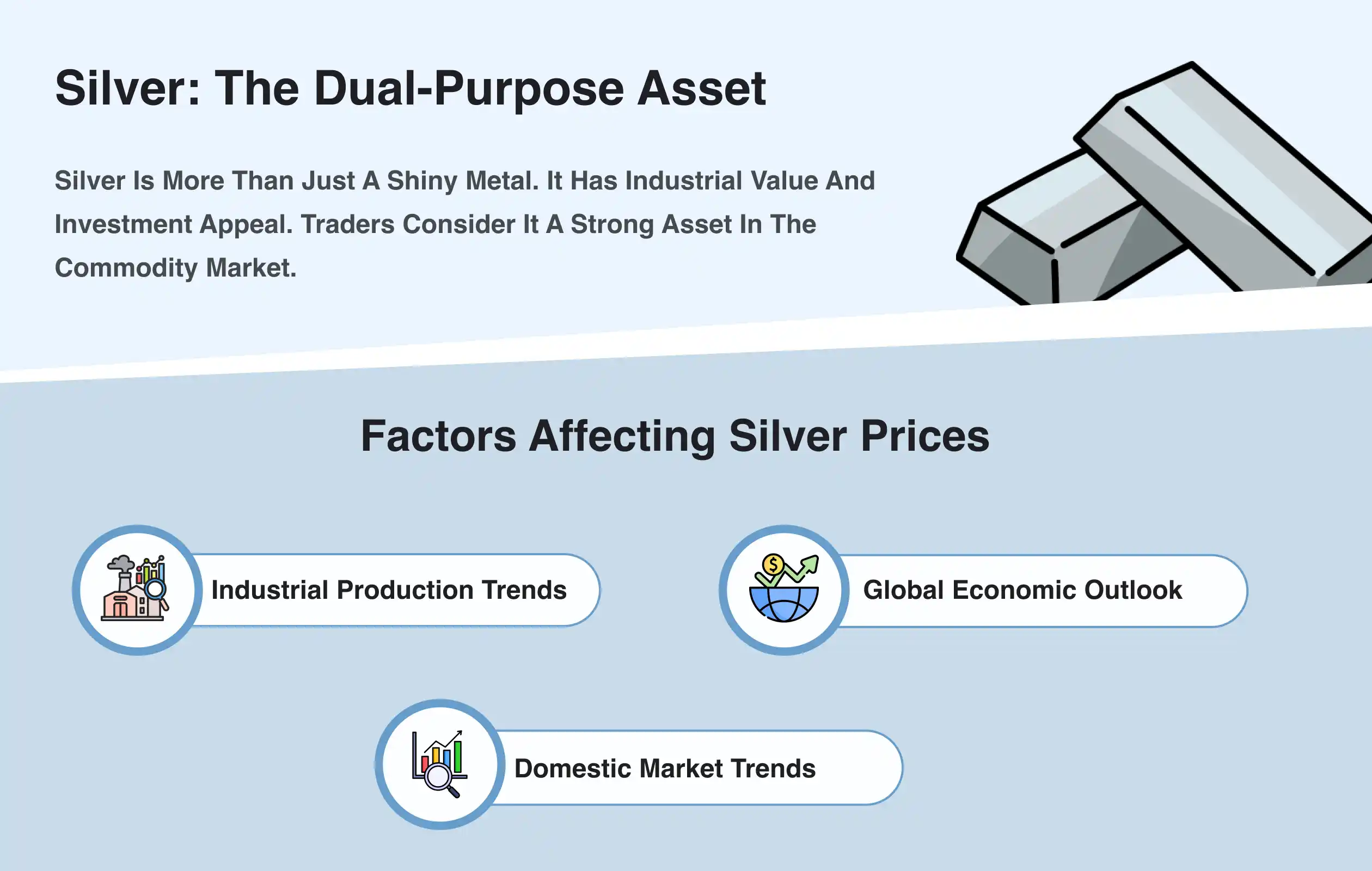
Silver is more than just a shiny metal. It has industrial value and investment appeal. Traders consider it a strong asset in the commodity market. Its demand comes from both industries and investors, making it a profitable choice.
Why is Silver a Lucrative Commodity?
Silver plays a key role in modern technology. It is used in electronics, solar panels, and medical equipment. As industries grow, the demand for silver rises. This makes it a valuable commodity.
Like gold, silver is also an investment option. People buy silver to protect their wealth. When commodity prices fluctuate, silver often gains value. This makes it a safe asset during economic uncertainty.
Factors Affecting Silver Prices
Several factors influence silver prices:
● Industrial production trends – High demand from industries pushes prices up.
● Global economic outlook – A strong economy increases industrial use.
● Domestic market trends – Local demand and currency value impact silver rates.
Trading Silver in the Commodity Market
Silver is traded in two ways: spot trading and futures contracts. Spot trading means buying silver at current market rates. Futures trading allows traders to bet on price changes.
Silver prices often follow gold trends. Smart traders use PriceVision to track price movements and make better trading decisions.
4. Natural Gas: A Volatile Yet Profitable Choice
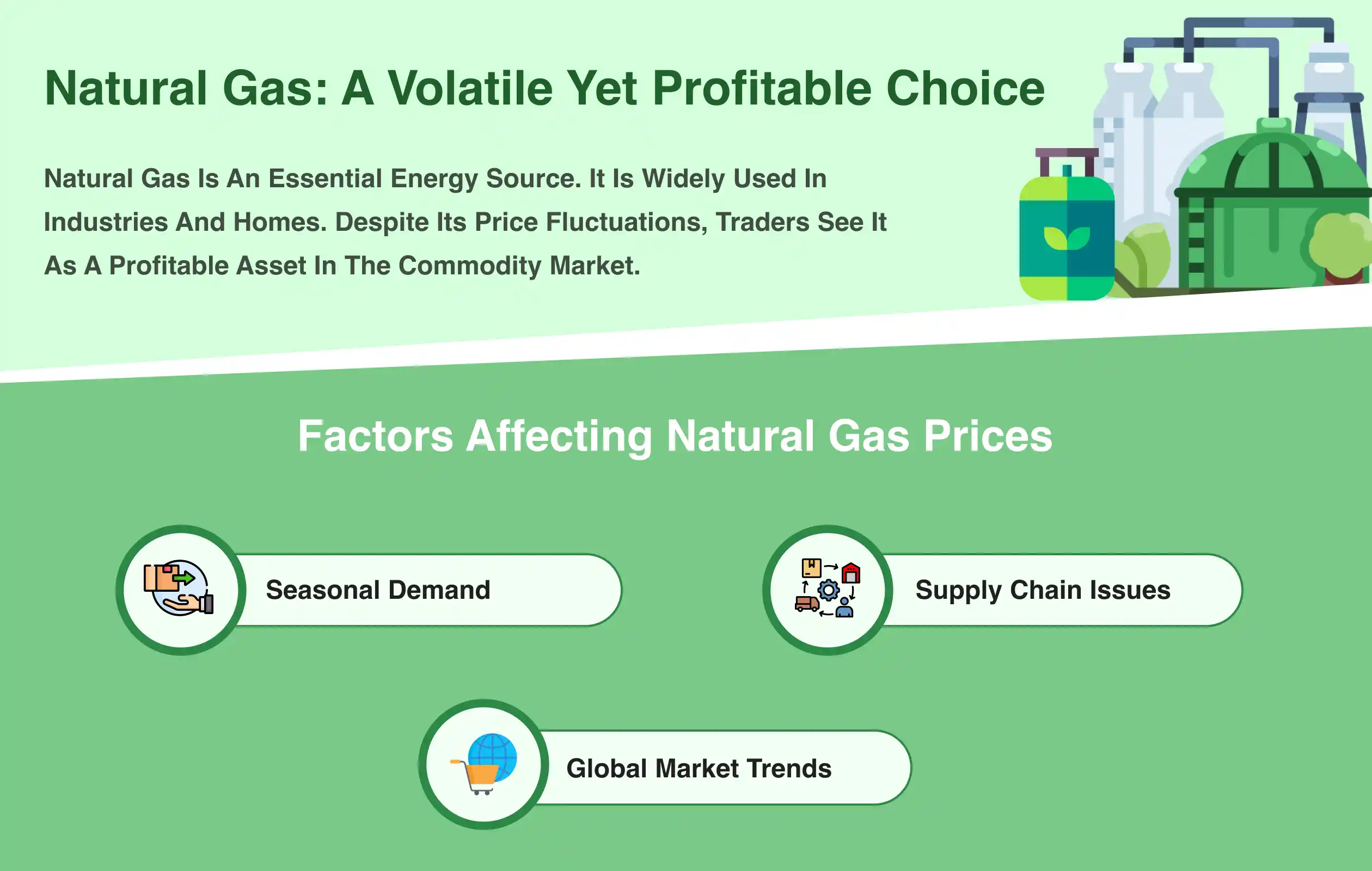
Natural gas is an essential energy source. It is widely used in industries and homes. Despite its price fluctuations, traders see it as a profitable asset in the commodity market.
Why is Natural Gas Gaining Popularity?
Natural gas is a cleaner alternative to coal and oil. Many industries prefer it for power generation. Households also use it for cooking and heating. As the world shifts to cleaner energy, the demand for natural gas is rising.
Governments are also promoting natural gas for sustainability. This increasing demand makes it a valuable commodity for traders.
Factors Affecting Natural Gas Prices
Several factors impact commodity prices for natural gas:
● Seasonal demand – Prices rise in winter due to heating needs.
● Supply chain issues – Transportation disruptions affect supply.
● Global market trends – Export and import policies impact prices.
Trading Natural Gas in India
Natural gas futures are traded on MCX (Multi Commodity Exchange). Traders track price movements to find the right entry and exit points.
Due to high price volatility, risk management is key. Smart traders use PriceVision to analyze trends and make informed trading decisions.
5. Agricultural Commodities: The Backbone of India’s Economy
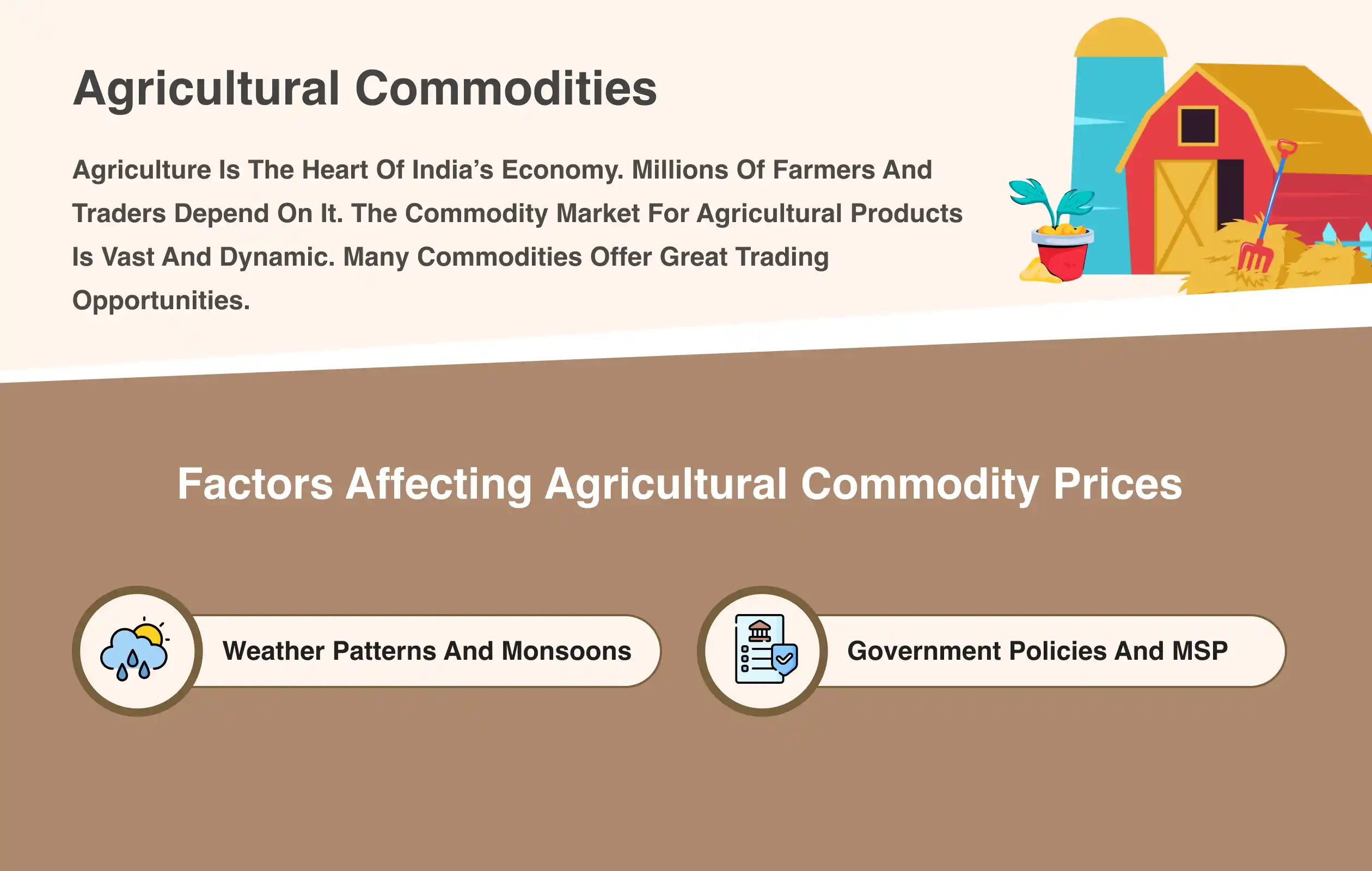
Agriculture is the heart of India’s economy. Millions of farmers and traders depend on it. The commodity market for agricultural products is vast and dynamic. Many commodities offer great trading opportunities.
Top Agricultural Commodities to Trade
Some agricultural commodities see high demand in India:
● Cotton – The textile industry relies on cotton. Its demand remains strong throughout the year.
● Soybean – A key player in the edible oil market. It is essential for food and livestock feed.
● Wheat – India’s staple crop. It has both domestic and international demand.
Factors Affecting Agricultural Commodity Prices
Many factors influence commodity prices in agriculture:
● Weather patterns and monsoons – Good rainfall leads to a better harvest. Droughts or floods reduce supply.
● Government policies and MSP (Minimum Support Price) – The government sets MSP to protect farmers. This affects market prices.
Trading Agricultural Commodities in India
Agricultural commodities are traded on NCDEX (National Commodity and Derivatives Exchange). Traders follow seasonal trends to plan investments.
Since prices fluctuate due to natural and economic factors, risk management is crucial. Smart traders use PriceVision to track trends and make informed decisions.
How PriceVision Can Help in Trading
PriceVision is a powerful tool that helps traders in the commodity market. It uses advanced technology to analyze data and predict price trends. Here’s how PriceVision can assist you in making better trading decisions:
1. Accurate Price Predictions
PriceVision uses AI to predict commodity prices. This helps traders know where the market is headed. Instead of relying on guesswork, you get data-backed predictions.
2. Real-Time Market Insights
The market moves fast. With PriceVision, you can track price changes as they happen. This real-time data helps you stay updated and take advantage of market opportunities.
3. Risk Management
Commodity prices can be volatile. PriceVision offers tools to assess risks and make safer trades. By understanding market trends, you can reduce potential losses and protect your investments.
Conclusion
India’s top 5 commodities to trade are gold, crude oil, silver, natural gas, and agricultural products. Each has its unique demand and market behavior. Tracking commodity prices is key to understanding market trends. To succeed in the commodity market, traders need to stay informed. Monitoring price movements and global factors helps in making better trading decisions. Traders can leverage insights from tools like PriceVision. With real-time data and accurate predictions, they can maximize profitability and minimize risk.
FAQs
1. What are the top 5 commodities to trade in India?
Gold, crude oil, silver, natural gas, and agricultural products are the top commodities in India. They are highly traded and offer good profit opportunities.
2. Why is gold popular for trading in India?
Gold is seen as a safe-haven asset. It has strong cultural values and helps protect wealth during uncertain times.
3. How do crude oil prices affect India’s economy?
India relies heavily on oil imports. Changes in crude oil prices impact fuel costs, inflation, and overall economic stability.
4. What factors influence silver prices?
Silver prices are affected by industrial demand, economic conditions, and its relationship with gold prices.
5. How can PriceVision help with commodity trading?
PriceVision offers real-time market insights and accurate price predictions. It helps traders make informed decisions and maximize profits.